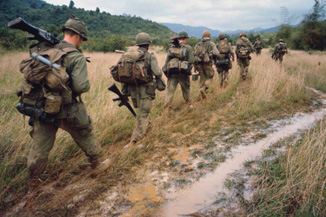|
|
TV Recap - The Vietnam War: Episode 3, Part 1By Mark LightOctober 19, 2017
The Maddox and another destroyer, the Turner Joy, got ready for an attack. No actual attack happened, but sonar operators on the Maddox and the Turner Joy convinced themselves that one had happened. They deemed the phantom North Vietnamese attack "probable but not certain." Since the attack "probably" happened, Johnson felt compelled to follow through with the consequences of his warning. Johnson ordered airstrikes against North Vietnamese targets. Johnson sent the resolution he had drafted to Congress. The Tonkin Gulf resolution is passed on August 7th, 1964 by a vote of 88-2 in the Senate. Not one congressman in the House opposed it. Johnson had the authorization for force that he wanted and his approval for his handling of Vietnam jumped from 42% to 72% a few months before the election. Le Duan wanted to escalate before Johnson got US combat troops into the South. He began, for the first time, sending North Vietnamese Army regulars down to the South. On November 1st, the Vietcong shelled Bien Hoa airbase. Five Americans were killed and five US planes were destroyed while 15 more were damaged. Johnson decisively won re-election to the presidency. He then began what was called a "graduated response." This included limited air attacks on North Vietnamese troops on the Ho Chi Minh trail in Laos and retaliatory airstrikes upon North Vietnamese targets for attacks in the South. He refused sustained bombing of the North until a stable government.existed in the South.
|

|
|
|

|
Thursday, April 25, 2024
© 2024 Box Office Prophets, a division of One Of Us, Inc.


